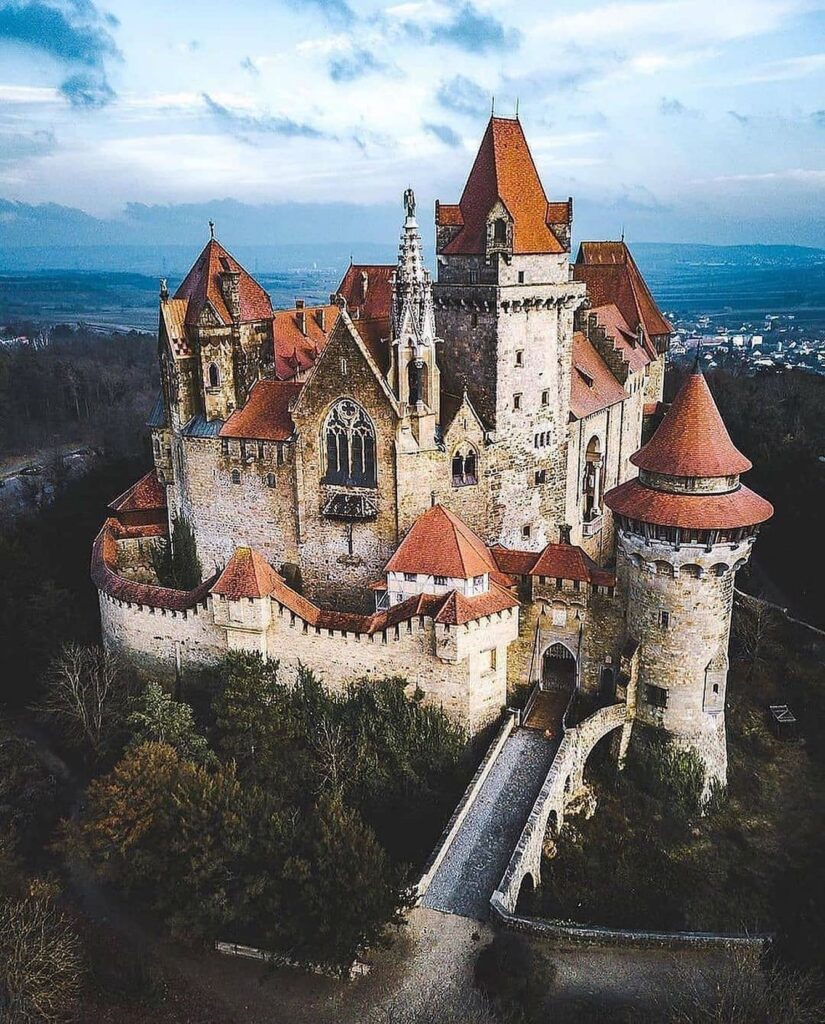The Lost Fortress of Burg Kreuzenstein in Austria

Burg Kreuzenstein, often referred to as the “Lost Fortress,” stands as a towering reminder of Austria’s medieval past. Situated just outside Vienna, this majestic castle offers a glimpse into the country’s rich historical and architectural heritage. Originally built in the 12th century, the fortress has been rebuilt and restored over the years to preserve its fascinating legacy.
The Fascinating History of Burg Kreuzenstein

The fortress of Burg Kreuzenstein has a history that dates back to the early 12th century, when it was first constructed to defend the region against invading forces. Located on a hilltop overlooking the picturesque town of Leobendorf, the castle was strategically placed to offer commanding views of the surrounding area, which would have been vital for military defense.
However, the fortress began to decline in the 17th century after being damaged during the Thirty Years’ War. By the 19th century, it had fallen into disrepair and was largely abandoned. The “lost” aspect of the fortress stems from its near total neglect until its revival in the late 19th century by Austrian nobleman Count Johann Nepomuk Wilczek.
The Rebuilding of Burg Kreuzenstein

Count Wilczek, a passionate historian and archaeologist, embarked on an ambitious project to restore Burg Kreuzenstein in the 1870s. Using a blend of medieval building techniques and a keen interest in historical accuracy, he rebuilt the fortress in a way that preserved its original medieval charm while incorporating modern advancements for the time. The result was a castle that not only looked like it had come straight out of the Middle Ages but was also functional for visitors and tourists.
The restoration was not just a physical reconstruction but also a celebration of Austria’s medieval heritage. The Count used materials from various historical sites around Europe to complete the structure, making Burg Kreuzenstein an amalgamation of different styles from across the continent.
The Castle’s Features and Architecture

Today, Burg Kreuzenstein is one of the most impressive medieval castles in Austria, with its majestic towers, battlements, and imposing stone walls. The castle features a combination of Gothic and Romanesque architectural styles, with intricate details in the design of the windows, doors, and entryways. It boasts a stunning array of medieval armory and weaponry, which are displayed throughout the castle’s halls.
One of the most famous aspects of the castle is its large collection of medieval arms and armor. These are not merely decorative pieces, but rather genuine artifacts collected by Count Wilczek during his travels across Europe. These armaments are displayed in the castle’s museum, offering visitors a unique look into the military history of the region.
Burg Kreuzenstein’s impressive collection of weaponry includes knights’ armor, crossbows, swords, and even siege equipment like catapults and battering rams. The inclusion of these historically significant items gives visitors an immersive experience, making them feel like they have stepped back in time to an era of knights and chivalry.
Visiting Burg Kreuzenstein Today

Burg Kreuzenstein remains a popular tourist destination, drawing history enthusiasts, architecture lovers, and anyone curious about Austria’s medieval past. Visitors can explore the expansive grounds, tour the restored rooms, and admire the historical artifacts housed within the castle. Guided tours are available to give a deeper insight into the history of the fortress, and special events, including medieval reenactments, are hosted throughout the year.
The castle’s location offers stunning views of the surrounding countryside, making it an ideal spot for photography and exploration. Whether you are interested in history, architecture, or simply experiencing a piece of Austria’s past, Burg Kreuzenstein promises an unforgettable journey through time.